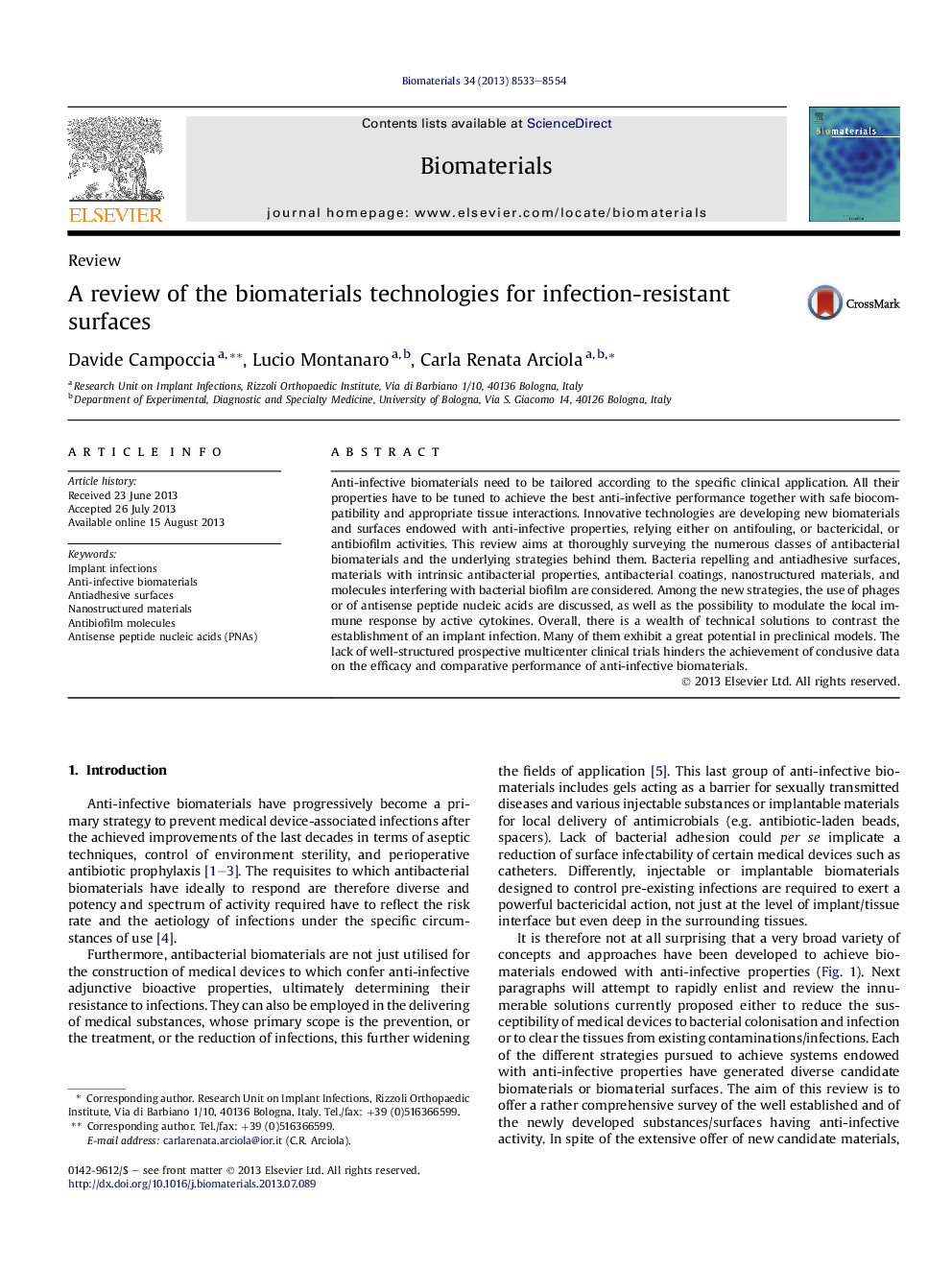| کد مقاله | کد نشریه | سال انتشار | مقاله انگلیسی | نسخه تمام متن |
|---|---|---|---|---|
| 10227976 | 470 | 2013 | 22 صفحه PDF | دانلود رایگان |
عنوان انگلیسی مقاله ISI
A review of the biomaterials technologies for infection-resistant surfaces
ترجمه فارسی عنوان
بررسی تکنولوژی مواد زیستی برای سطوح مقاوم در برابر عفونت
دانلود مقاله + سفارش ترجمه
دانلود مقاله ISI انگلیسی
رایگان برای ایرانیان
کلمات کلیدی
ترجمه چکیده
مواد بیولوژیکی ضد عفونی باید با توجه به کاربرد بالینی خاص طراحی شوند. تمام خواص آنها باید برای رسیدن به بهترین عملکرد ضد ایدز همراه با سازگاری بیولوژیکی و متابولیسم مناسب بافت ها تنظیم شود. فن آوری های نوآورانه در حال توسعه مواد زیستی جدید و سطوح دارای خواص ضد عفونی هستند و به فعالیت های ضد انعقادی، ضد باکتری و یا آنتی بیوفیلم وابسته هستند. این بررسی با هدف بررسی دقیق طبقات متعدد مواد بیولوژیکی ضد باکتری و استراتژی های زیربنایی آنها انجام شده است. مواد با خواص ضد میکروبی درونی، پوشش های ضد باکتری، مواد نانوساختار و مولکول های دخیل در بیوفیلم باکتری در نظر گرفته می شوند. در میان استراتژی های جدید، استفاده از فاژ ها و یا اسیدهای نوکلئیک پپتید ضد انسانی مورد بحث قرار گرفته است، و همچنین امکان تغییر سیگنال های فعال ایمنی محلی را می دهد. به طور کلی، راه حل های فنی برای مقابله با ایجاد عفونت ایمپلنت وجود دارد. بسیاری از آنها توان بالقوه ای در مدل های پیشین دارند. فقدان کارآزمایی بالینی چند محوری که به خوبی ساختار یافته اند، مانع دستیابی به اطلاعات قابل اعتماد در مورد اثربخشی و عملکرد نسبی مواد بیولوژیکی ضد عفونی می شود.
موضوعات مرتبط
مهندسی و علوم پایه
مهندسی شیمی
بیو مهندسی (مهندسی زیستی)
چکیده انگلیسی
Anti-infective biomaterials need to be tailored according to the specific clinical application. All their properties have to be tuned to achieve the best anti-infective performance together with safe biocompatibility and appropriate tissue interactions. Innovative technologies are developing new biomaterials and surfaces endowed with anti-infective properties, relying either on antifouling, or bactericidal, or antibiofilm activities. This review aims at thoroughly surveying the numerous classes of antibacterial biomaterials and the underlying strategies behind them. Bacteria repelling and antiadhesive surfaces, materials with intrinsic antibacterial properties, antibacterial coatings, nanostructured materials, and molecules interfering with bacterial biofilm are considered. Among the new strategies, the use of phages or of antisense peptide nucleic acids are discussed, as well as the possibility to modulate the local immune response by active cytokines. Overall, there is a wealth of technical solutions to contrast the establishment of an implant infection. Many of them exhibit a great potential in preclinical models. The lack of well-structured prospective multicenter clinical trials hinders the achievement of conclusive data on the efficacy and comparative performance of anti-infective biomaterials.
ناشر
Database: Elsevier - ScienceDirect (ساینس دایرکت)
Journal: Biomaterials - Volume 34, Issue 34, November 2013, Pages 8533-8554
Journal: Biomaterials - Volume 34, Issue 34, November 2013, Pages 8533-8554
نویسندگان
Davide Campoccia, Lucio Montanaro, Carla Renata Arciola,
